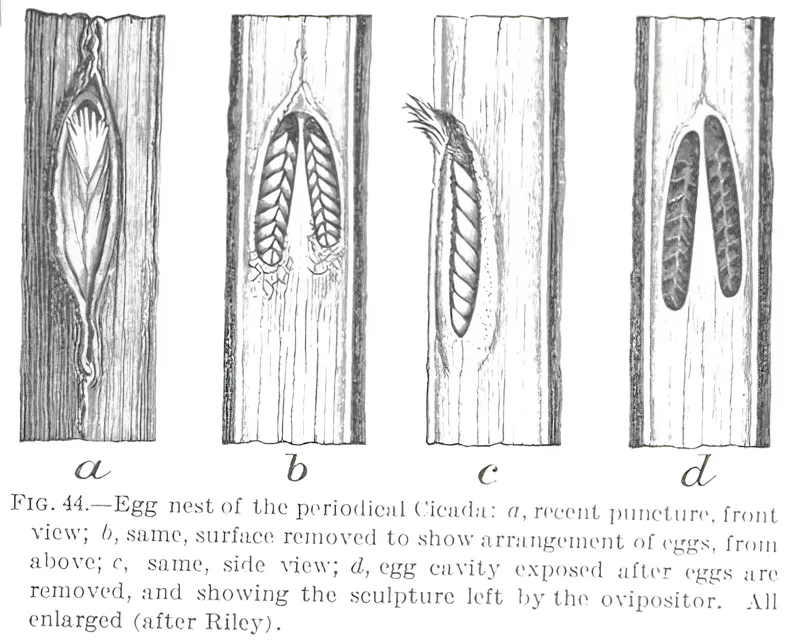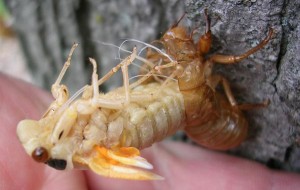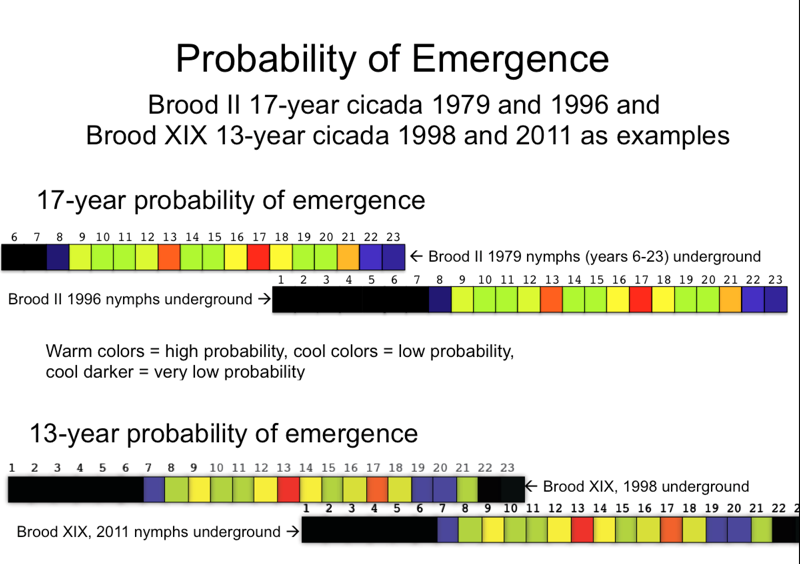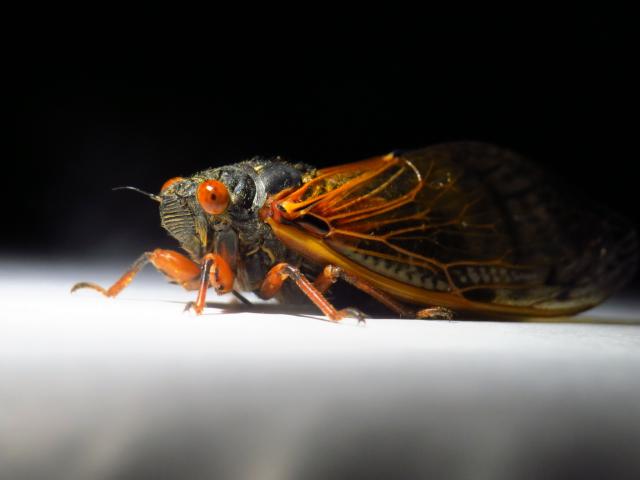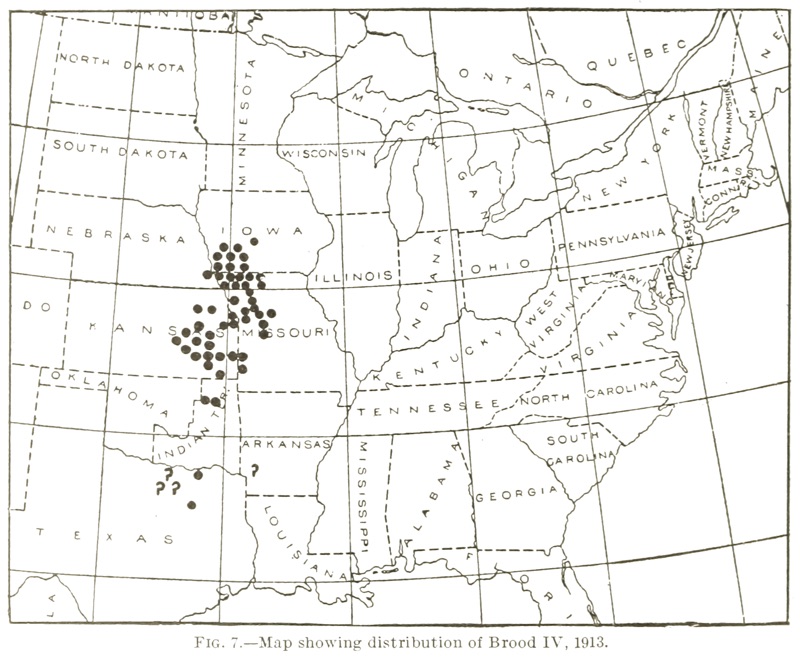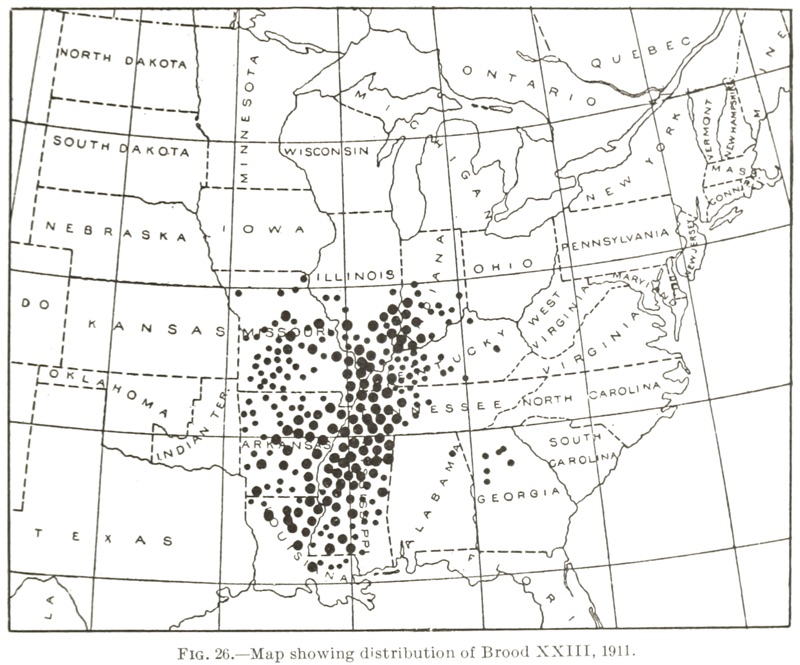The Internet Archive has a lot of cicada documents and information, including a growing collection of articles from journals.
Today I came across a paper about Brood VII called The Periodical Cicada Brood vii Revisited (Homoptera, Cicadidae) by L. L. Pechuman, published in 1985 in the journal Entomology News (link to the article). Brood VII will be back in New York in 2018 (not too far away) so I’m glad I found this now. Brood VII is interesting because it is geographically isolated from other broods, near the Finger Lakes area of New York. This always makes me wonder what happened that led to their isolation (glacial melting, a massive die off of host trees… who knows).
The article is a quick, but melancholy read — unfortunately Brood VII is a small and dwindling brood; it has gone extinct in many areas, and has suffered over-predation by birds in recent emergences. “Populations were just not high enough to support ‘predator satiation'”, according to L. L. Pechuman.
People who witness massive periodical cicada emergences would never think that they were a fragile insect, but they are and papers like this make that fact abundantly clear.
